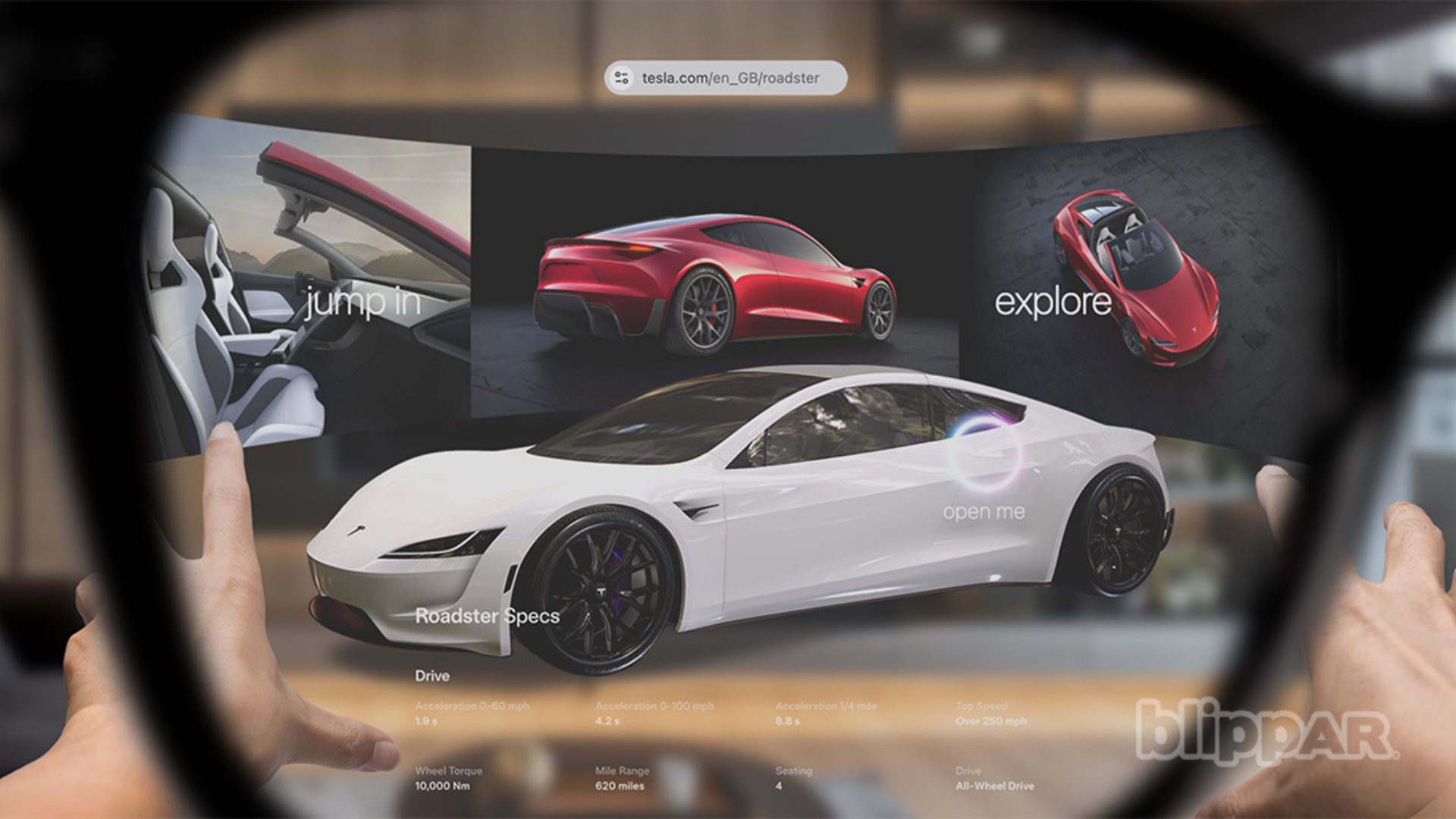The coming of Augmented Reality glasses - the next computing revolution.
For well over a decade, our mobile phones have been our ‘go to’ companion for everyday communications, productivity and for consuming augmented reality (AR) content. It all began with iOS and Android apps leveraging the power of the camera along with the operating systems enabling us to see and experience the magic of AR.
Over time, mobile browsers became more powerful, enabling AR content to be delivered directly through the web, with no need for any app download. However, web-based AR (webAR) experiences remained lightweight compared to app-based experiences due to the limitations of browser environments, bandwidth and accessibility to specific hardware features. For example, access to sensors like the gyroscope is significantly higher in native apps vs within web browsers. This difference impacts the quality of AR experiences - surface tracking (also referred to as SLAM), for instance, tends to perform much better in apps than in browsers.
As a result, AR experiences on the web often feel less responsive and immersive compared to those within dedicated applications. Even so, Blippar has developed proprietary world-class WebAR SLAM tracking that is accessible to all and used daily on a global basis by our users and clients.
The limitations of mobile phones for AR
Despite advancements, mobile phones are still not the ideal devices for consuming AR content. This can be attributed to two major factors:
Unnatural interaction – Viewing AR content on a phone requires users to hold their devices up, switch on the camera, and interact with content through the screen. This creates a physical barrier between the user and the digital experience, making interactions feel sometimes cumbersome and unnatural.
Limited field of view – A smartphone screen occupies only a small portion of a user’s overall vision, restricting the immersive sensory experience. Imagine being inside a dark room with only a small window to peek outside - it becomes obvious that most of your surroundings remain blocked. Similarly, AR on a mobile phone fails to offer a fully immersive and convincing experience as the majority of the user’s field of view remains in the real world.
The Future: AR Glasses as the ultimate AR device
This is where AR glasses will revolutionize content consumption. Imagine wearing lightweight glass lenses, similar to prescription eyewear that provide a vast field of view while keeping your hands and other senses free to interact naturally with digital content.
A truly immersive field of view
Unlike mobile phones, AR glasses offer a much wider field of view, reducing the distinction between physical and digital realities. The ultimate goal is achieving a 180 degree field of view, allowing users to see virtual elements even in their peripheral vision. This seamless blending of digital and physical environments creates a truly immersive experience.
Current head-mounted displays (HMDs) are a stepping stone towards this vision, but their bulky form factors along with battery limitations remain a challenge. However, with advancements in AI, semiconductor technology, and quantum computing, we are on the path to soon seeing and habitually using lightweight AR glasses that deliver high-quality, immersive AR experiences.
A more natural way to interact
Unlike mobile phones, which require users to hold their devices up unnaturally, AR glasses serve as an extension of natural vision. By integrating technologies like haptic feedback, we can mimic touch and feel, and even introduce sensory experiences like smell, making digital interactions more realistic than ever before.
The Impact: How AR glasses will become habitual
AR glasses will redefine how we engage with the world in ways that go beyond just entertainment…
Learning & Training – Imagine learning a new skill with an instructor appearing right in front of you, guiding you through each step. Pilots could train with realistic flight simulations, and medical students could practice surgeries in a mixed-reality environment.
Education – A visit to the zoo could become an interactive biology lesson, with digital overlays showing the skeletal structure of animals in real time. Stargazing could be enhanced with virtual constellations and planetary movements displayed right above you.
Navigation & Travel – Walking through a city, you might be accompanied by a virtual guide that provides historical insights, points out landmarks, and even assists in navigating streets safely.
Shopping & Commerce – re-imagining shopping in every aspect - extending brand reach with themed, visually rich and immersive spaces with the ability to see, explore and experience any product virtually.
Entertainment & Gaming – AR glasses will allow for interactive gaming experiences in the real world, where characters and stories can seamlessly integrate into our physical environments.
Our commitment to the AR Revolution
At Blippar, we are actively building solutions to prepare for this future. We firmly believe that the mass adoption of AR glasses is imminent, and we are committed to becoming the leading content creators for this emerging medium. Our solutions work across the emerging and rapidly changing AR landscape including Apple Vision Pro, Meta Quest, and Pico, and we continue to innovate to ensure we make AR accessible to all through any lens.
The future of AR is unfolding before us, and AR glasses will lead the way.
Are you ready to experience the next evolution of digital interaction? If yes, do contact us.



